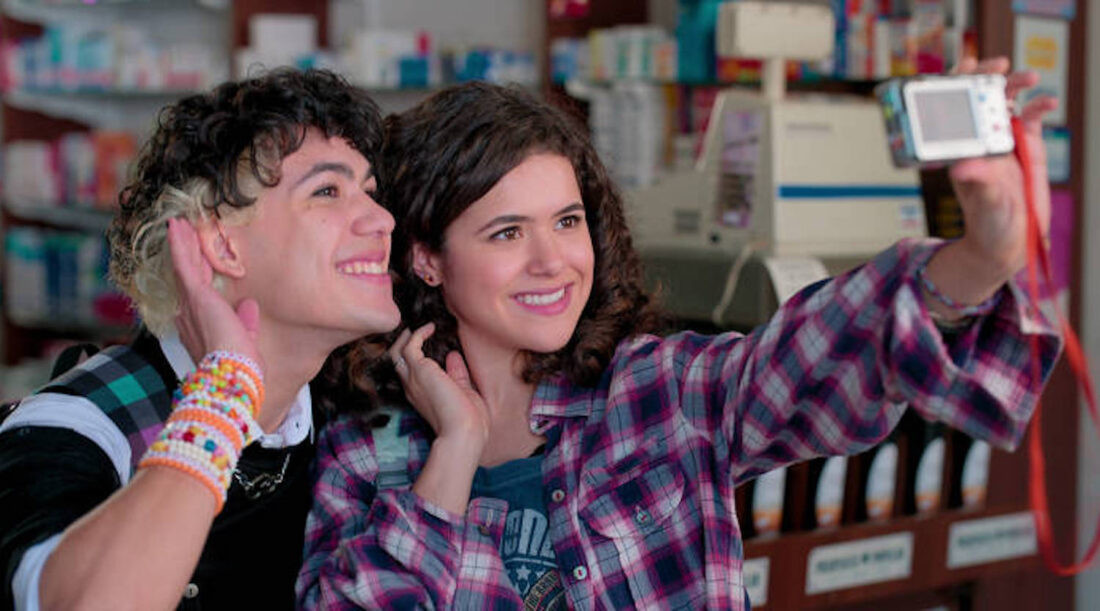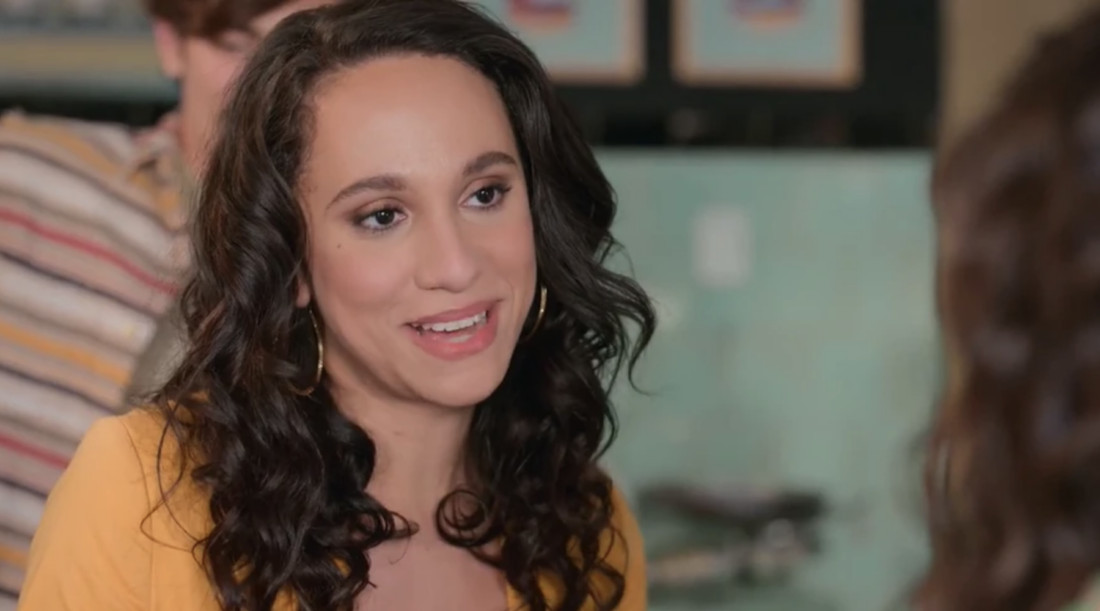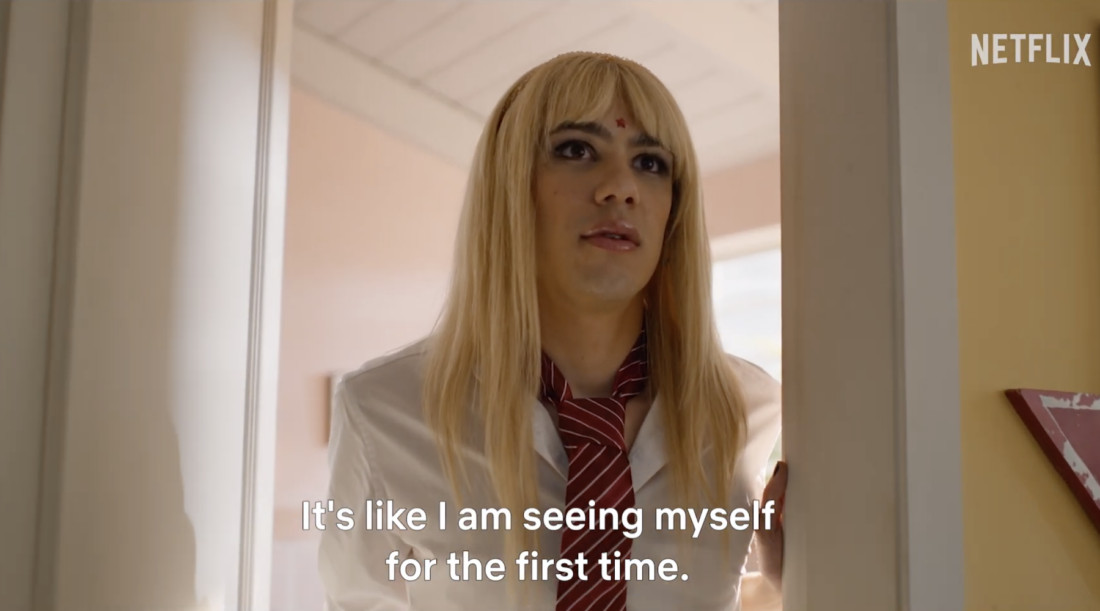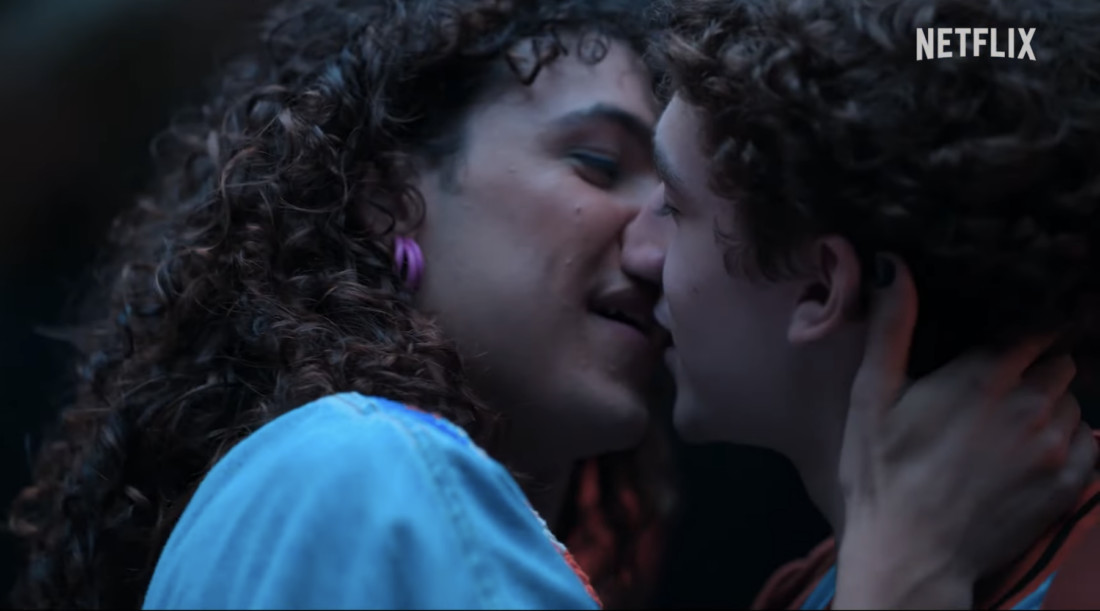Netflix is a treasure trove for international TV shows, and for English-speaking audiences seeking something fresh and genre-bending, Brazilian television is a fantastic avenue to explore. While many incredible series from Brazil might fly under the radar, there are true gems to be discovered, especially in the realm of science fiction and fantasy. One such gem, which recently concluded its third and final season, is Back to 15 (De Volta Aos 15), a series that offers a unique and heartwarming take on the concept of time travel.
Back to 15 introduces us to Anita, a thirty-year-old who feels lost and unfulfilled. Her life takes an unexpected turn when she revisits her old photoblog from her teenage years – a digital diary of sorts, predating platforms like Instagram. Suddenly, through a quirk of digital nostalgia, Anita is transported back in time, finding herself inhabiting her fifteen-year-old body on her first day of high school. This sets off a chain of events where she learns that each new teenage photo she posts to her photoblog acts as a temporal trigger, sending her back to the present, but to a present that has been altered by her actions in the past. Driven by a desire to fix not only her own life but also the lives of her friends, Anita begins to jump back and forth, making changes in the past with often unpredictable and humorous consequences.
Yes, the premise is delightfully absurd. However, time travel as a narrative device has always been ripe for comedic and whimsical exploration. De Volta Aos 15 captures this spirit perfectly, evoking a nostalgic feeling reminiscent of classic CW or Disney Channel shows, perhaps akin to Kyle XY. It strikes a balance between lighthearted fun and addressing relevant social issues, such as bullying, toxic masculinity, and the impacts of gentrification, all within a vibrant Brazilian context.
What truly elevates Back to 15 is its heartfelt portrayal of characters, particularly Anita’s best friend, Camila. Camila is a trans girl whose journey of self-discovery and transition is depicted with remarkable sensitivity and authenticity. Adding to this authenticity, Nila, the actress who portrays the 15-year-old Camila, was undergoing her own transition during filming. Furthermore, Alice Marcone, a trans actor and writer who plays the adult Camila, contributed her voice to the narrative by writing two episodes in the show’s first season. This behind-the-scenes involvement of trans individuals enriches the character and ensures a nuanced and genuine representation.
 Teenage Anita and Camila, best friends in the "Back to 15" time travel TV series, sharing a lighthearted moment.
Teenage Anita and Camila, best friends in the "Back to 15" time travel TV series, sharing a lighthearted moment.
From Book Series to Screen Adaptation
Back to 15 is adapted from a series of books by Brazilian author Bruna Viera. Alice Marcone, beyond her acting role, was deeply involved in the show’s development from its inception. While Marcone identifies primarily as a screenwriter due to the limited opportunities for trans actors, her contribution to Back to 15 is significant.
In the original books, Camila is a cisgender, minor supporting character. However, Marcone and creator Janaína Tokitaka envisioned a more prominent and contemporary role for Camila in the TV adaptation. Marcone explains, “Since Netflix wanted to bring contemporary topics into the adaptation, we felt it would be meaningful to reimagine Anita’s best friend as a trans person.” This decision to expand Camila’s role and make her trans was a crucial step in making the series more relevant and impactful.
When casting began, Marcone initially auditioned for the role of adult Camila and was delighted to be cast. “Camila’s story is deeply personal to me, and much of it is drawn from my own experiences,” Marcone shares. The parallels between Marcone and Camila extend to their shared passion for writing and Camila’s academic pursuit of psychology, mirroring aspects of Marcone’s own life.
Beyond Stereotypes: Camila’s Multifaceted Character
 Alice Marcone as adult Camila, a writer and psychology student in the time-bending TV series "Back to 15" on Netflix.
Alice Marcone as adult Camila, a writer and psychology student in the time-bending TV series "Back to 15" on Netflix.
Nila, who portrays the teenage Camila, collaborated closely with Marcone to shape the character. Their shared vision for Camila fostered a strong bond between the two actors, leading to future project collaborations. Nila began embodying Camila at a pivotal time in her own life, as she was “understanding myself as a trans person.” During the filming of the second season, Nila embraced her name change and further explored her transition, drawing on these personal experiences to enrich her portrayal of Camila.
Marcone emphasizes that in the first season, the writers aimed to depict the pre-transition Camila to illustrate “how the lack of LGBTQIA+ representation, both in media and society, can make self-discovery and self-recognition difficult for transgender people.” In the initial season, Camila navigates her identity by adopting an “emo” persona, a subtle expression of her inner femininity. Season two marks a significant turning point as teenage Camila transitions. Marcone highlights the importance of crafting “a coming-out arc that was positive and drama-free, showcasing the acceptance from family and friends that many trans people need but rarely see portrayed.”
Nila was particularly mindful of “not turning Camila into ‘the trans character of the series.’” This conscious effort is evident in the character’s development. Camila is not solely defined by her trans identity; she is also an aspiring writer, crafting stories about a heroic witch and grappling with the universal anxieties of creative endeavor and self-doubt. Intriguingly, in many of the alternate timelines Anita inadvertently creates, Camila achieves her dreams and becomes a successful fantasy author.
“The thing I love most about building this character is the fact that Camila’s conflicts, though influenced by her appearances, are not solely restricted to her experience as a trans woman,” Nila explains. Particularly in the third season, Camila faces more complex challenges, including navigating writing struggles and romantic relationships, further solidifying her as a well-rounded and relatable character. Nila hopes viewers will see Camila “as just another character who, like the others, is going through her own process of maturing.”
Nila believes Back to 15 is groundbreaking in its representation, stating, “Honestly, I believe this character has huge generational appeal.” She observes that trans teenagers connect deeply with Camila, recognizing their own struggles in her journey. Camila’s core challenges, according to Nila, “lie in the realm of loneliness, insecurity and low self-esteem.” Witnessing Camila overcome these obstacles, reconcile with her family, find love, and develop self-acceptance offers an inspiring narrative for anyone who has ever felt like an outsider, regardless of age or background.
Time Travel as a Tool for Self-Reflection and Growth
 Nila as teenage Camila, a complex character exploring her identity in the "Back to 15" time travel series.
Nila as teenage Camila, a complex character exploring her identity in the "Back to 15" time travel series.
Marcone reflects on the universal appeal of time travel, noting that “the notion of traveling back into the past appeals to our sense of nostalgia—until we discover that the past wasn’t as perfect as we thought it was.” In De Volta Aos 15, Anita’s time-traveling escapades are not just about altering personal history to eliminate adult problems; they become a journey of confronting the societal issues that contributed to her present circumstances. “Time travel stories help us reflect on who we are,” Marcone suggests, potentially leading to a greater acceptance of the choices and experiences that have shaped us.
Marcone draws a compelling parallel between time travel and therapy: “Time travel can function like therapy.” She elaborates, “In therapy, the idea is that by revisiting and retelling the past, you can reshape your present. This is the core premise behind many time travel stories, including Back to 15. Anita’s journey is about revisiting different moments and helping herself and others become better versions of themselves. The process of healing, growth, and self-improvement is similar to the therapeutic process of examining one’s past to create a better present and future.”
Writer Gautier Lee emphasizes the self-discovery aspect of De Volta Aos 15: “We wanted to show how even in the craziest of timelines, we can still become better people, find our people and grow together.” Lee cites influences like Back to the Future, Happy Death Day, and Bryan Lee O’Malley’s Seconds in shaping the show’s time-travel narrative. When tasked with co-directing a “Groundhog Day” style episode, Lee drew inspiration from “fun montages” in superhero shows like The Flash and DC’s Legends of Tomorrow, adding an extra layer of levity to the time-loop trope.
Embracing Queerness and Diversity
 Bruna and Luiza's lesbian romance, showcasing queer storylines in the "Back to 15" TV series' later seasons.
Bruna and Luiza's lesbian romance, showcasing queer storylines in the "Back to 15" TV series' later seasons.
While Camila stands out as the primary queer character in the first season, De Volta Aos 15 expands its LGBTQ+ representation in subsequent seasons. Season two introduces a delightful lesbian romance involving Anita’s sister and other queer characters, organically weaving diverse storylines into the narrative.
Lee, who joined the writing team in season two, explains that making the show more queer “came naturally to us.” The writers embraced opportunities to develop queer storylines organically, such as transforming a musician character’s backstory to include a female ex-partner, leading to a lesbian romance with Anita’s sister. Lee emphasizes that the goal was to create “queer stories that felt as natural as any other teenage issue,” ensuring that these relationships were depicted with the same authenticity and relatability as any other teenage experience.
Marcone points out that Netflix’s desire for a “feel-good” show influenced the series’ tone. Despite Marcone’s usual inclination towards darker genres, she recognizes the power of humor in making complex themes more accessible to audiences.
Lee, a Black non-binary dyke, highlights the significance of having queer and BIPOC writers in the writers’ room. This diversity, she believes, “helped us see even clearer the beauty of being young, queer, and a bit confused by life as any teenager is.” The writers prioritized portraying queer teenagers as teenagers first, allowing them to experience the typical teenage struggles of making mistakes, rebelling, falling in love, and experiencing heartbreak. Lee notes that De Volta Aos 15‘s success as Netflix’s top non-U.S. show for two consecutive weeks underscores the positive impact of diversity behind the camera, leading to richer and more resonant storytelling.

